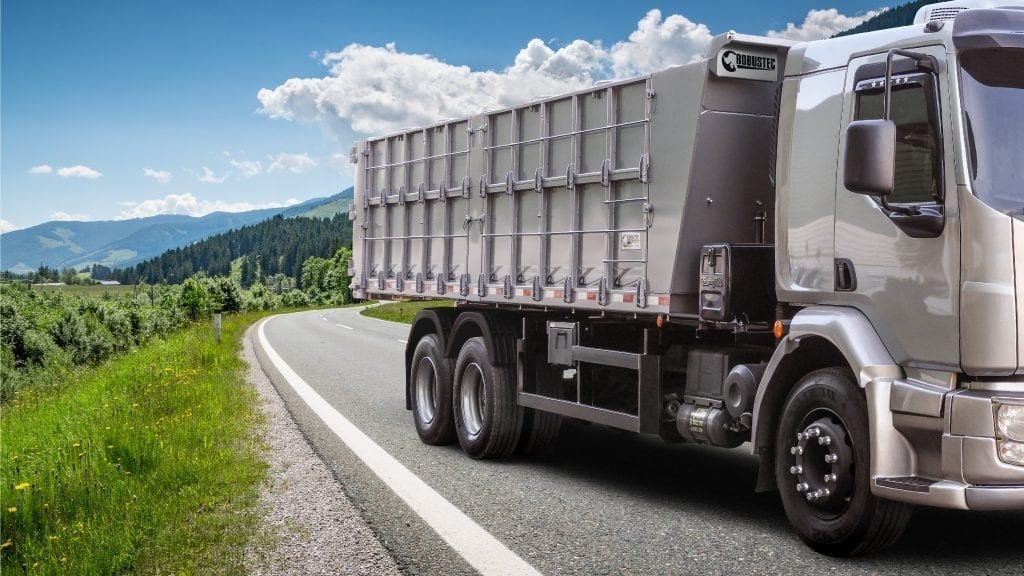No products in the cart.
Agriculture
Grain transport: 7 tips to be more efficient
Some measures are necessary to increase efficiency and avoid waste in grain transportation. Many losses occur in the post-harvest phase, mainly due to poor road maintenance and the lack of adequate equipment.
In addition, some care must be taken to ensure that the loads reach their destination without damage. After all, this kind of dry cargo cannot be exposed to the sun or rain for a long time.
Learn how to be more efficient in transporting grains
1. Choose a suitable trailer
Grain transportation involves precautions such as choosing a suitable trailer to carry the load. The truck body must be well structured and sealed to avoid the grain loss, it must also be able to accommodate boxes, bags and bales properly, so that the load remains protected and organized throughout the journey. In addition, the dimensions, characteristics and load capacity of the vehicle are very important factors in the process.
According to Contran, it must be carried out in vehicles with bodies whose side guards are closed or with metal screens to avoid material waste during the trip. In addition, the load must be covered by a tarp anchored to the vehicle body and in good condition.
2. Make good logistics planning
To avoid losses, it is important to choose and plan the best logistics for the transport of your grains. For this, the logistics management needs to know clearly which batch should leave for distribution, the departure day, which vehicle will make the trip, among other important information. This information allows the load preparation team sufficient time to properly pack and load the beans.
3. Pay attention to the products seasonality
Transportation planning must also take into account factors such as the products category, their characteristics and their seasonality. For logistics to be efficient from start to finish, it is essential that the data flow and information are constant and very well controlled. To ensure ideal conditions, particular attention should be paid to factors such as room temperature, air humidity, and the packaging used.
4. Check the load protection
The bodywork must be well closed and sealed, so that there are no changes in the products quality. Also check that the lining, structure and the bucket floor are suitable for the weight and type of the goods being transported.
For example, in the soybeans case, so that the grain is not compromised in the middle of the road by heat or humidity, the bodywork must be very well sealed. The product must not come into contact with water from rain or any other source at any time during the journey, to avoid the appearance of microorganisms harmful to the grains.
5. Use tarpaulin for bulk cargo
Tarps are essential items for bulk load transportation. In addition to protecting the load, they prevent the driver from having to pay fines or suffer other penalties. According to CONTRAM Resolution No. 618 (known as the “enlonamento law”), the trucks circulation without tarpaulins or screens is prohibited on municipal, state or federal highways. The measure was taken to avoid spills or falling cargo on the roads, which could lead to accidents.
6. Choose the most suitable route
After the harvest, it is necessary to define the products destination and the route that will be taken to reach the final destination. In this way, it is easier to know what warehouses types will be necessary and what bucket type will be the most suitable for each type of load.
The bulk box, for example, is ideal for dry bulk cargoes that do not need packaging, such as cereals, grains, fertilizers and manure.
7. Use technology to your advantage
To optimize logistics, producers must use technologies such as integrated management systems (IMS), which help in monitoring all production chain stages. In addition, software such as production sensors and the automated fleet supply system allow for greater resource savings and operating costs control.
With these technologies, it is possible to manage all orders, control stocks, monitor transport routes, select the most suitable equipment and use precise metrics.

Discover our solutions in road implements
Robustec road implements bring more efficiency, safety and speed to the transport sector. Adaptable to the most diverse situations, the tipping bulk buckets are used to transport grain and equipment. These boxes types have lids and high side doors, which help to store the load during the trip.
Mounted directly on the truck chassis, these devices offer safety and robustness in the most varied applications, optimizing performance and reducing costs.
With a reinforced structure, the bulk tipping bucket is suitable for transporting bulk products, such as corn, soybeans, wheat and oats, as well as palletized materials in big bags or even implements and equipment. It allows a high cargo volume without exceeding the limit imposed by law. Because of its tilting feature, it facilitates the unloading procedure and other procedures.
Made of strong and lightweight structural steel, the bulk bucket has a chassis made of plates, tubes and structural profiles, with reinforced articulation of the cargo bucket. The lifting system works by means of a central or lower cylinder.
Discover the Robustec bulk bucket by clicking here!


